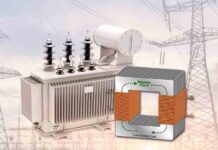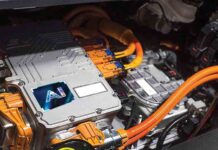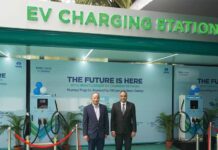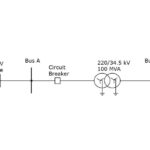
Electric Vehicle (EV) and Hybrid Electric Vehicle (HEV) configurations have been historically proposed as a more sustainable alternative to the conventional fossil-fuel powered internal combustion (IC) engines for the global automotive and transportation industries. The COVID-19 pandemic has resulted in tectonic shifts in such foundational concepts and compelled several industries to adopt a philosophical bend of mind to accept the new norm, the automotive industry being no exception. While the pandemic aftershocks have led to external factors that typically impact the automotive value chain as well as the global energy economy as a whole, such as sharp decline in crude prices, it has also created new opportunities in the technology layer. The pandemic era can be looked upon as an opportunity for the stakeholders to resurrect the energy and associated verticals, unlocking new business models and identifying innovation sweet spots. The electric power economy, overarching application areas such as smart grids and its components such as the charging infrastructure and grid storage, is all set to adopt to these paradigm change.
Some of the major trends of the grid connected EV landscape and the associated technologies are as follows:
Fluidizing the power exchange: Deploying EVs at scale would have a cascading effect on the energy grid, one of them being the increase in grid load during the charging operation i.e., transfer of energy from the grid to the vehicle (G2V) to charge the battery. To fortify the grid stability, the EV ecosystem players are reinforcing the EV with vehicle to grid (V2G) technologies. V2G depicts the set of technologies used for the management and control of electric vehicle loads through the local electrical utility. The V2G nomenclature represents a robust two-way communication channel with the smart grid as well as the vehicles and initiates the transfer of unused or excess power back to the grid. The components included usually consists of vehicle to grid chargers, grid aggregators, power loads, power transmission systems and communication systems. The typical advantages of V2G revolve around harmonic filtering, resulting in improved quality of power and efficient failure recovery from an outage. The active power support manifests load-leveling services along with peak load shaving. Also, control of the grid voltage becomes more precise with control switching and appropriate sizing of the DC link charger capacitor. The EV owners are economically benefited with respect to the amount of energy transferred back to the grid.
Enhancing grid stability with bidirectional power flow: The smart grid leverages an integrated communication system to manage and control power flow associated with the EV battery. In a conventional system, this flow is often unidirectional which consists of a basic control system for controlling the charging rate. The concept is, however, effective enough to provide power grid support with spinning reserves and grid control. This energy exchange can be made more fluidic with a flexible policy between electrical utility and EV users. In order to unleash the true potential of the power flow with several grid support activities such as reactive power support, peak load shaving, frequency regulation and voltage regulation, bidirectional flow can be activated i.e., V2G and G2V. A bidirectional EV battery charger consists of DC/DC converter and AC/DC converter (rectifier). During EV charging, the rectifier converts the AC power from the grid to DC power, which is again converted back to AC with an inverter while discharging, sending the power back to the grid. The DC/DC converter, on the other hand, acts as a flyback or a buck-boost converter that uses current control methods to regulate the bidirectional flow i.e., a boost converter and a buck converter during discharging and charging respectively.
Dedicated grid stabilization initiatives: The rapid growth in the numbers of electric vehicles on Britain’s roads will mean more demand on local electricity networks, if EVs are all plugged in at the same time, such as during the peak between 5pm and 7pm in the evening. Recently, UK’s Western Power Distribution (WPD), in collaboration with CrowdCharge has triggered a new V2G trial across parts of the UK, as a part of the next phase of the Electric Nation program. The program is directed towards enabling EVs to stabilize the grid, powering domestic houses.
Technological advancements come with its share of challenges and bidirectional power flow is no exception. The technological development and its market attributes have several nuances, some of which should be strategically upholstered to drive commercialization
So What?
Stabilizing the grid has been a major challenge for utilities as well as technology developers for decades and a long-term solution would not be viable without active involvement in the initiatives by the EV users. The policies should be incentivized, such as it is rewarding for the EV owners to not to charge their vehicles during peak time resulting in the prevention of the peak hour overloading. Developing and commercializing the ideal energy storage technology has been one of the major challenges plaguing the energy industry. Continuous charging and discharging associated with bidirectional flow would lead to quicker degradation of the EV battery due to the irreversible internal chemical reactions. To support such operations, the ideal balance between energy density, specific energy, and cost should be found, else the battery stands vulnerable to the deterioration of the battery’s usable power and increase its internal resistance.
Battling the cost resistance: While the utilities have been drumming up government support to sanction the capital-intensive up-gradation of the existing power system with respect to the software and hardware infrastructure of smart grids, the impact will trickle down to the EV users as well. To fulfill the V2G requirements, the EV participant would require a sophisticated (and hence, cost-intensive) bidirectional battery charger. Furthermore, the charging and discharging would increase chances of energy losses over smart grids.
Absence of targeted promotion campaigns: The understanding of the criticality of grid stability is often myopic on the end-user side. Thus, without a short-term, tangible benefit, it would be challenging for the utilities to convince EV users to participate in V2G schemes. Furthermore, the automotive industry, which was profusely bleeding cash since the pre-COVID times, has been compelled to edict the normalized EV pricing propositions into obscurity. With high prices and lower subsidies, the potential EV owners are often discouraged to rule out the counterpart IC engine powered options. There is, thus, need for interlocution between the government, the automotive OEMs and utilities to segment the pricing propositions for various cross-section of EV buyers and subscribers such as schemes for buyers with smart homes, buyers with installed solar panels at home, buyer with limited accessibility to the grid and so on. A well-defined scheme highlighting realizable value can overturn a user towards opting for an EV or participating in energy sharing propositions.
Hydrogen economy can be a looming threat: Despite the technology development slowdown, the much-awaited hydrogen economy is a promising alternative to grid-connected EV, HEV and other options of sustainable mobility. The hydrogen-powered propulsion indirectly challenges the market of V2Gand G2V technologies. The development and commercialization of fuel cell powered vehicles in certain regions (the US and few countries in Europe) is one of the major drivers for the adoption of hydrogen as an environment-friendly, emission-free fuel. The fuel cell can be fed on any hydrocarbon compound, which is disintegrated into carbon and hydrogen within the cell. The hydrogen is used to produce electricity and water is generated as end-product. With the addressal of shortcomings related to efficient way of hydrogen storage and upscaled production, this technology can completely neutralize the demand for the grid energy exchange infrastructure associated with the EV.
In spite of the challenges, it may be expected that too futuristic technology alternatives would be discarded in these inadvertent times. R&D budgets of OEMs are likely to be slashed, discouraging such enterprises to be pushed below the substitutional technologies at this juncture.
Key Takeaway
Even with undisputable advantages of reactive and active power support, renewable energy support, grid overloading prevention, failure recovery, and power factor regulation, bidirectional power flow remains a convoluted impasse. The COVID era exposes the environmental hardliners and electric mobility evangelists to an even more belligerent situation as compared to the fossil-fuel driven value chain participants. With plummeting crude prices, surfacing of hybrid configurations of CNG and LPG with petrol from auto majors to minimize operating cost, the thriving EV market is suffering a pernicious setback. The complementing market of zero-power homes (which can produce its own electricity consumption through rainwater harvesting and solar panels), which were expected to be one of the biggest contributors to V2G options, are withdrawing to an inadvertent plan of sustenance. This is due to increased solar panel prices because of the import restrictions of Chinese products and rippling effect on the overall operational value chain, driving the total ownership cost higher.
Overall, it would be challenging to convert potential EV buyers to actual buyers without a discrete, short-term monetary benefit or by imposing draconian penalties for carbon emissions. Absence of a structured blueprint of either would make the wide scale adoption of bidirectional power flow technologies and the associated stability of the smart grid a distant and overtly ambitious aspiration.
Disclaimer: The views expressed in the article belong solely to the author, and not necessarily to the author’s employer, organization, committee or any other group or individual.

Avimanyu Basu
Lead Analyst with
Information Services
Group (ISG)



















